- Dec 2, 2024
- Sep 27, 2023
Since its beginning in 1975, the ODI Men’s Cricket World Cup has been a stage for teams to showcase their best batting performances. Despite the heightened pressure associated with the prestigious tournament, teams such as Australia, India, and South Africa have consistently set new records for the highest team scores. These remarkable achievements can be attributed to record-breaking partnerships, double centuries, and powerful batting displays. South Africa has done it twice already during the ODI World Cup 2023 campaign. Once against Sri Lanka scoring 428 and then against England scoring 399 for 7 in Mumbai.
In the earlier days of ODI cricket, a total of 300 runs was considered high, but those times have significantly changed. In the contemporary cricket landscape, scoring above 300 has become almost imperative, especially in crucial matches of the World Cup. Teams are now surpassing even the 400-run mark, a feat that was once a rarity up until the last decade. The evolution of the game is evident in the increasing frequency of high-scoring innings, reflecting the changing dynamics and expectations in the world of ODI cricket.
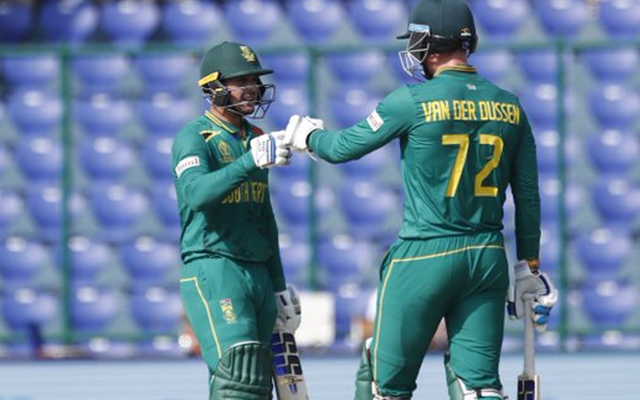
In the 2023 World Cup fourth match in Delhi, South Africa surpassed Australia’s 2015 record by posting a colossal total of 428 for five against Sri Lanka. The Proteas achieved a historic milestone by becoming the first team to register three totals exceeding 400 in World Cup history.
Additionally, this remarkable feat included the unprecedented occurrence of three batsmen scoring centuries in a single innings during a World Cup match. The match will also be known for Aiden Markram’s 106 which came off just 54 deliveries. The special thing about this inning was that this was the fastest century by any player in the history of the World Cup. It is also not to forget that Quinton de Kock and Rassie van der Dussen were the initial players who set up the base for this mammoth score. The duo stitched a partnership of 204 deliveries.
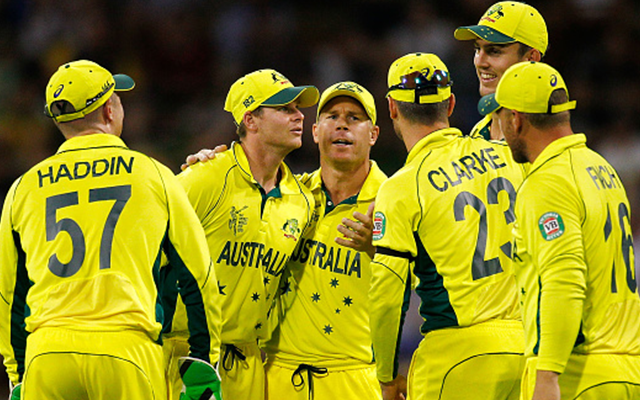
In the Cricket World Cup 2015 clash, Afghanistan faced a daunting challenge against Australia as the hosts amassed a formidable 417/6 in 50 overs. David Warner’s aggressive 178 and Steven Smith’s contribution set the stage. Smith missed out on a well-deserved century as he scored a brilliant 95 runs. In addition to this, Maxwell capitalized on the foundation laid with an outstanding 88 runs to his name. The Afghanistan bowlers struggled, and Australia surged past 400, leaving the opposition fielders as mere spectators in the high-scoring encounter.
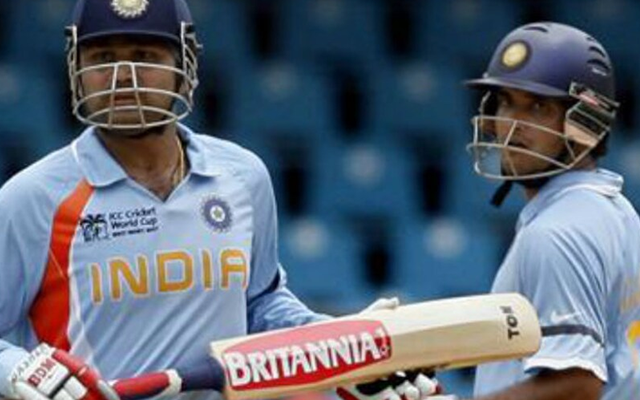
It was in the 2007 edition of the World Cup between India and Bermuda when India also got their names on leader board. The Indian team recorded a humongous 413 runs for the loss of five wickets in their allocated 50 overs. The star with the bat for the Indian team was Virender Sehwag who demolished the Bermuda bowling lineup. Sehwag scored an outstanding 114 runs off just 87 balls and was also supported by Sourav Ganguly. The former India skipper also went on to score 89 runs.
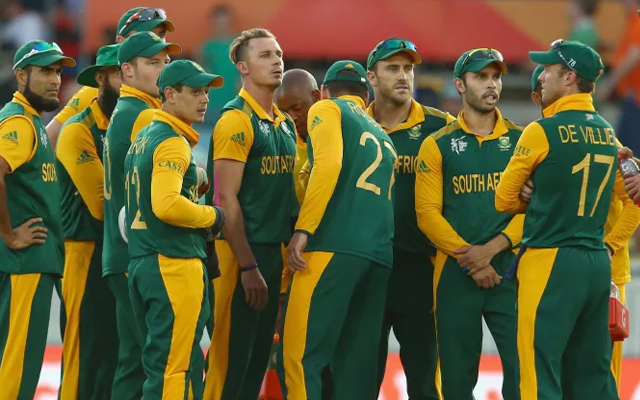
In the 2015 World Cup match against Ireland, Hashim Amla and Faf du Plessis formed a dominant partnership, scoring centuries and contributing to a 247-run second-wicket stand. Amla, who benefited from a dropped catch early on, recorded a career-best 159 from 128 balls. Du Plessis added 109 before being dismissed.
Despite a brief slowdown after du Plessis’ departure, Amla continued his onslaught with AB de Villiers (24 of 9 balls). Later, David Miller (46) and Rilee Rossouw (61) accelerated, securing a formidable total. The South African scored 411 runs in their allocated 50 overs.
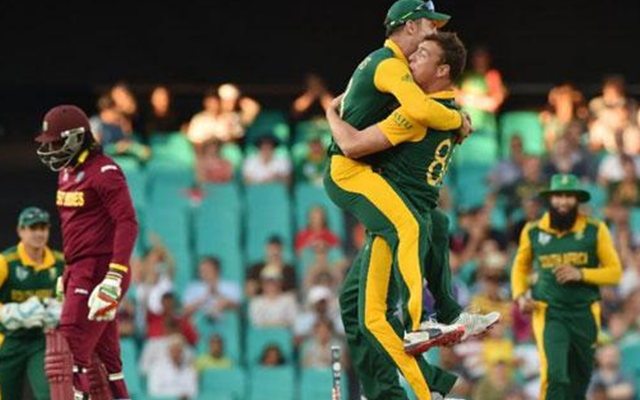
AB de Villiers achieved his first century of the Cricket World Cup 2015 in just 52 balls, marking his third consecutive hundred against the West Indies in World Cup matches. Joining Rilee Rossouw, the duo established a South African record with a 143-run partnership for the fourth wicket in the tournament.
Not only de Villiers but Hashim Amla (65), Faf du Plessis (62), and Rilee Rossouw (61) also contributed with useful half-centuries.